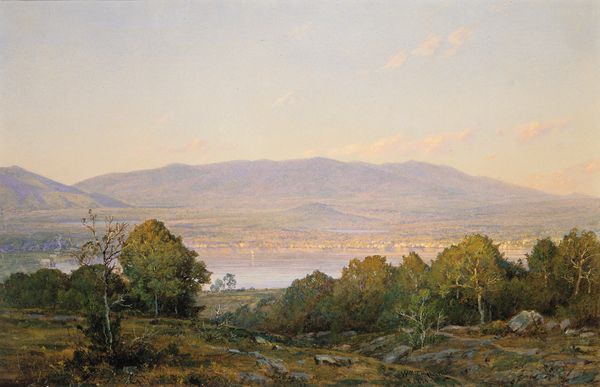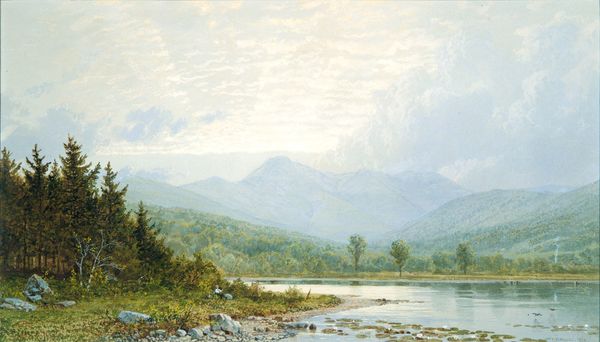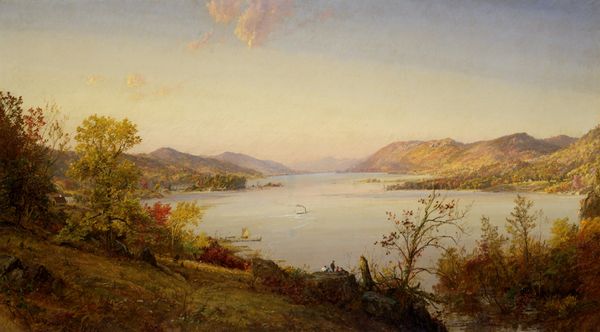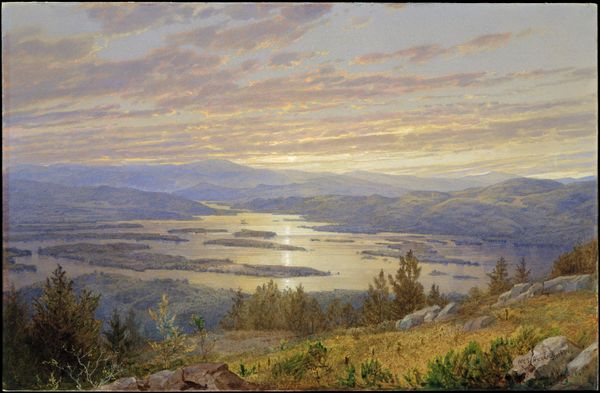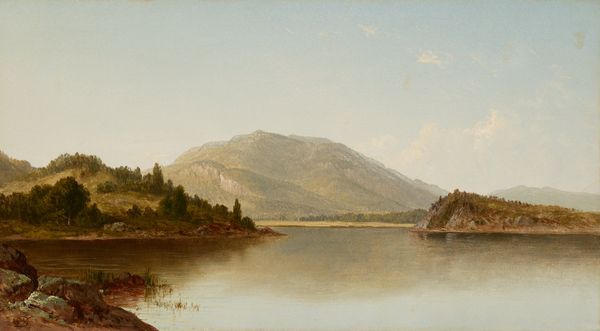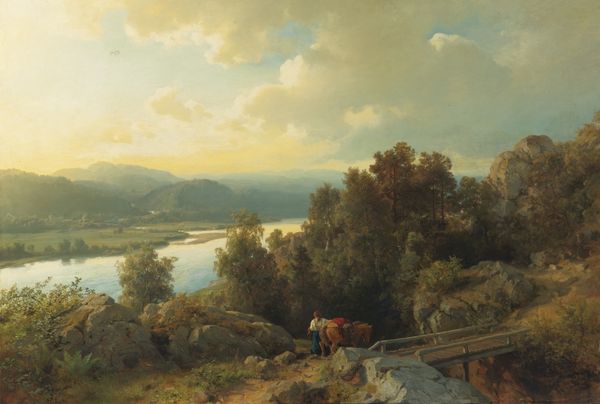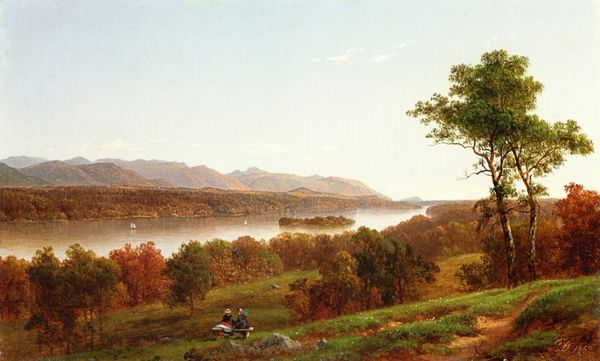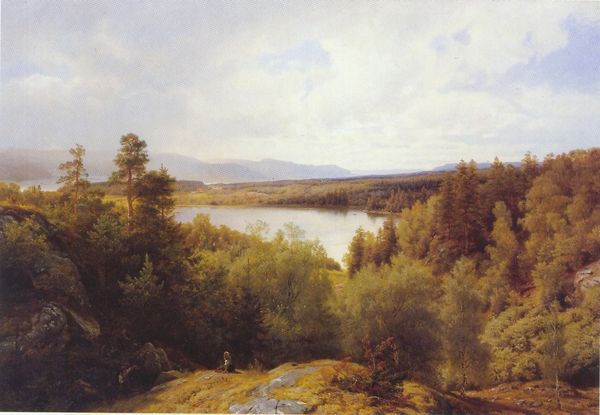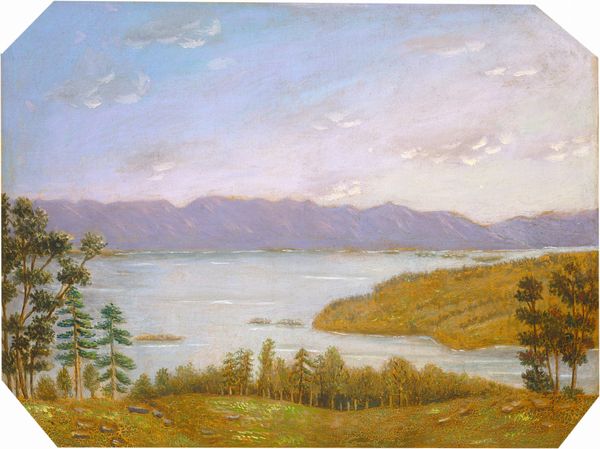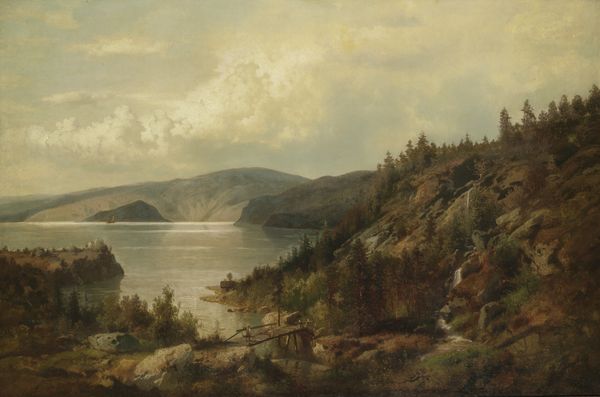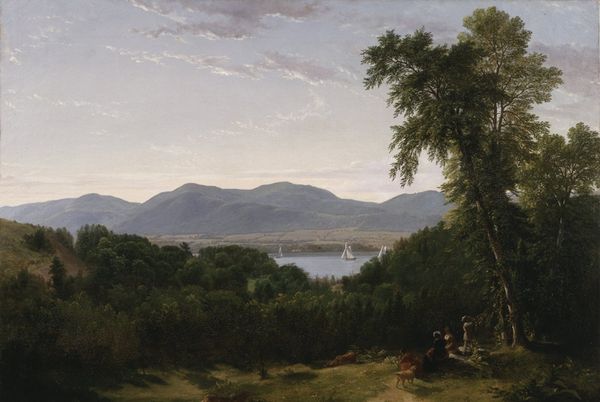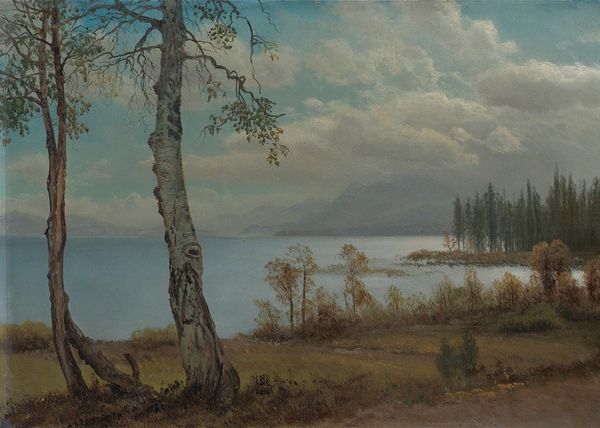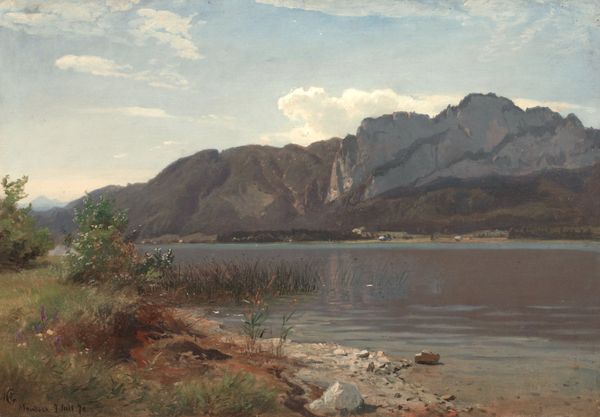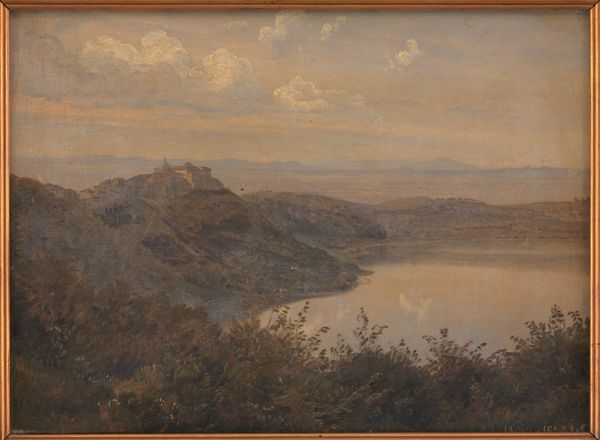
watercolor
#
lake
#
landscape
#
oil painting
#
watercolor
#
hudson-river-school
#
watercolor
#
realism
Dimensions: 8 3/16 x 14 5/16 in. (20.8 x 36.4 cm)
Copyright: Public Domain
Curator: This is William Trost Richards’s “Lake Squam and the Sandwich Mountains,” a watercolor from 1872. It's part of the Met's collection. Editor: It’s rather serene, isn’t it? All soft edges and muted colors. A real feeling of stillness pervades. The pale sky especially reinforces a quiet mood. Curator: Absolutely. And part of that stillness comes from Richards' incredibly meticulous technique. He builds up the scene through countless tiny brushstrokes. Consider the materiality itself: watercolor allows for thin, translucent layers. Editor: Precisely. Observe the subtle gradations in tone. Notice how light catches the water's surface and reflects upward. The color palette, muted greens and blues, reinforces the contemplative mood. Compositionally, he is clearly arranging pictorial elements to create a sense of receding space. The formal concerns are undeniable! Curator: That recession also echoes the growing industrialization in America at the time. Paintings like these romanticized untouched nature, an idealized vision contrasting with encroaching factories and expanding cities. This connects with Richards' audience seeking a connection with the unspoiled landscape. Consider that landscapes provided resources for timber, but these images erase all labor. Editor: A compelling argument about consumption. The forms alone, though, demand consideration! The balance between the detailed foreground and the hazy distance is quite striking. Semiotically, this contrast establishes a dialogue between the concrete and the abstract, wouldn't you agree? Curator: There's no question about formal complexity here, but I think grounding this painting in its original cultural context provides more depth and reveals the societal values it represents. It is not just how Richards renders, it is *why* he chooses this ideal and the values that implies. Editor: Point taken. I confess my perspective might be too intrinsically rooted within formal analysis, divorced, perhaps, too readily from that crucial context. The painting serves as both aesthetic object *and* a commentary on 19th-century values. Curator: Agreed. Richards created beauty, but the artwork itself reflects the desires of a society grappling with major shifts in how it was. Editor: It’s been enlightening, seeing it through that lens. Curator: Indeed, appreciating the artistry alongside its cultural roots makes this vista all the more profound.
Comments
No comments
Be the first to comment and join the conversation on the ultimate creative platform.
